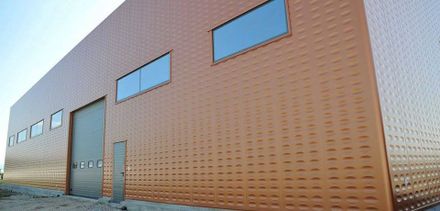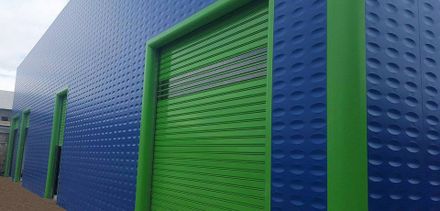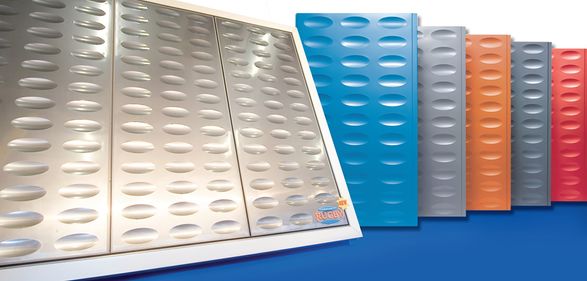Elcomsystem Termopareti ® Rugby Panels
TERMOPARETI ® RUGBY PANELS
TERMOPARETI ® RUGBY PANELS
The panels TERMOPARETI “RUGBY®” (patented) have been studied to create original architectural impressions with an extraordinary design innovation.
A new goal that, up until today, was considered unimportant in the field of thermoinsulating panels.
INFORMATION
BRAND
Elcomsystem
PRODUCTION
Made In Italy
INSULATION
PUR Density 40 Kg/m3 – B1 DIN 4102
λ = 0,0022 Kcal/mqh° C
THICKNESS
40-50-60-80-100 mm
FINISH
Stainless Steel
USE
industrial, commercial, residential building and public utilities, for new buildings and renovations
EDGES
Spherical
CORNERS
Rounded
EXTERNAL SURFACE
important and significant elliptic imprints pressed on the steel.
DESIGN
The imprints are negative respective the external side of the support and they can be realised on all materials normally used for profiling such as galvanized and/or prepainted steel, aluminium, stainless steel and copper. The peculiarity of the panels is on the external surface: important and significant elliptic imprints pressed on the steel.
SUPPORTS
- Steel And Prepainting Uni En 10169
- Aluminium–Lega 3105 – Physic State H46 Uni En 1396
- Copper–Cu-dhp–R240 En 1172 - Stainless Steel–Aisi 304 Uni 10372
DEATIL
-The panels TERMOPARETI® “RUGBY” (patented) have been studied to create original architectural impressions with an extraordinary design innovation. A new goal that, up until today, was considered unimportant in the field of thermoinsulating panels. They are available in different thicknesses and colours, and they can be used in industrial, commercial, residential building and public utilities, for new buildings and renovations. -Elements with thermic cut such as rounded and right corners, edges and spherical connections are finishing that complete and bring out the TERMOPARETI® RUGBY. The panels TERMOPARETI® RUGBY (patented) are equipped with a special continuous PVC fixed-in profile to increase the overall fixing stability of the panel and to avoid detachments of the supports from the insulation either during handling them or in the working phase.




